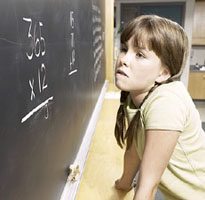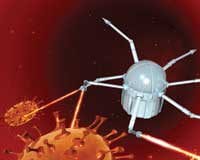
He was diagnosed that summer with Attention Deficit Hyperactivity Disorder (ADHD), inattentive type, along with learning difficulties in maths and reading. My husband, Hamed, and I found ourselves in a twilight world, etched with unfamiliar landscapes with a new language and new code words to learn.
Experts agree that the inattentive type that my son has is much easier to deal with than the hyperactive type. Adam is quiet and not terribly social. He likes playing with Lego and on the computer. He was rapt with attention when I read to him as a small child. His attention is selective. Since he could pay attention when he wanted to, it made it easier for me to rationalise that perhaps he didn’t really have a problem.
However, there were signposts along the way, which neither of us recognized. For example, he seemed to be in a world of his own much of the time. I worried at one point, when he was about three-years old, that he might be autistic. Autism, ADHD, Asbergers Syndrome and Tourette Syndrome are actually on the same spectrum, so I wasn’t far off.When he enters a room, he is compelled to touch everything, much like a person with no sight would. He is a tactile child, who learns about the world through touch. He was also my most cuddly baby. What bothered me the most about Adam, and still does actually, is that he is a child who never seems to listen. I screamed horribly at him to get him to do simple things, like brushing his teeth and getting dressed for school in the morning. His sisters seemed to manage with no trouble at all, so why couldn’t he? The morning routine is still trying for us. And I worry if he will ever be independent.
Â
 When I watch him engaged in his own world, whether it’s Lego or the computer, he is able to block out the rest of the world completely. He is a child preoccupied with the present. Not a bad thing, really. But when you need to be somewhat goal-oriented to function in the world, it does present problems. For example, Adam is not able to follow two step directions. If I tell him to brush his teeth and get dressed, he will go off with the intention of doing that. But he sees a Lego on the floor and is compelled to create something with it.
When I watch him engaged in his own world, whether it’s Lego or the computer, he is able to block out the rest of the world completely. He is a child preoccupied with the present. Not a bad thing, really. But when you need to be somewhat goal-oriented to function in the world, it does present problems. For example, Adam is not able to follow two step directions. If I tell him to brush his teeth and get dressed, he will go off with the intention of doing that. But he sees a Lego on the floor and is compelled to create something with it.
When I ask him about it, he will reply, “Mummy, my brain wouldn’t listen to me; it’s like a monster is directing me.â€
I am beginning to understand that he has little control when left to his own devices. He needs constant direction and simple, uncomplicated instructions. And lots of patience. I have learned to say, “Adam, go pick up all the Legos off your bedroom floor,†instead
of “Adam, go clean your room.â€
Adam is surprisingly self-aware. It was he who broke our cycle of denial and compelled us to take the step to get him tested. One morning, a television commercial was aired for a learning institute for children with learning difficulties, and Adam said, “You guys should call them for me.â€
Following his diagnosis, I was determined not to go the medication route, even though the school principal pressed me to “just see if it helped.†Adam didn’t qualify for special education services because he was not far enough behind, according to the school psychologist. It didn’t help that most parents of ADHD kids said basically the same thing: “We tried everything and finally, when we were tired of banging our heads against the wall, we tried the medication and that was the magic bullet.â€
Hamed and I read books and changed his diet. We stopped dairy products and switched to whole grains and eliminated as much sugar as we could because naturopaths have suggested these types of substances trigger ADHD. We talked to other parents, searched websites, spent hours online in ADHD chat rooms and even joined a support group. We heard nightmare after nightmare. And I must admit that a lot of the kids I saw seemed much worse off than my son. Meanwhile, the way I looked at my son began to change. I began to see him as a child with a disability, instead of my sweet, little boy. It’s a confusing landscape and at the end of the day, I learned to trust my instincts and let my son be my guide in this journey. I wish I could say that we didn’t go the Ritalin route. But I can’t. We did cave in because we felt pressure from the school and his doctors. We didn’t see immediate side effects, but there were subtle things. For example, I noticed that he stopped singing and skipping. I thought he was just growing up. But then I took him off the medication for a week and he started to sing and skip again. Now that he is off the medication, he is much more animated. I’m focusing on his positive behavior and looking for ways to engage him and bond with him one-on-one. He may not be performing at the top of his class, but he is learning at his own pace. And he is happier.
Coping Solutions
Living with a child with ADHD is trying. At times it has felt like a constant battle. There were moments when I thought I was losing myson because of all the fighting. It also put a strain on our family until we learned some coping mechanisms. Children with ADHD need help with organization, so having a consistent routine is critical. Small rewards helped to keep Adam on task. We learned to give more positive reinforcement and concrete consequences for his actions. We had success with a program called 1-2-3 Magic, which our paediatrician recommended. This method involves giving the child a warning to correct his behaviour and then counting to three to give a time limit for correction. When this fails, a consequence, such as a time-out is swiftly implemented. Subtlety doesn’t kick it with these children. We also learned that to be more effective, Adam needed to be more active. For example, he can concentrate better if he stands at the table while doing his homework. He needs to be more physical in order to think. Bean bag chairs and balls to bounce on also work well. Keeping his room sparse and free of extra toys helps to eliminate some of the distraction. Self-esteem is critical for any child, but of particular importance for a child with ADHD. Adam was very aware that he was struggling both academically and socially. He used to tell me he “had a stupid brain,†which was very far from the truth. Hamed and I found soccer and swimming to be terrific outlets for him. He also loves board games and those have proved to be excellent learning devices as well.
Being an advocate in the classroom
Fortunately, when he was evaluated at the Children’s Hospital, they also tested his IQ, which turned out to be almost 130. His verbal abilities were quite low but his non-verbal abilities actually put him in the genius range. This huge discrepancy between his academic performance and his intelligence was what qualified him for special education services. But it wasn’t easy to get there. In the end, he had a dedicated special assistant in the classroom and an individualized education program (IEP), which was formally evaluated every year. When we came to Australia last year, we were not so lucky. In Australia (or at least Western Australia), a child only qualifies for special education services if he or she has an extremely low IQ. For a boy like Adam, it is up to the teacher to do what she can for him. And in the public school system, a teacher with 30 or more children can’t do much. I met with the principal and the school psychologist and his teacher and informed them of his background and in what areas he needs special assistance. I’ve offered to help in the classroom. I’m trying to organize parents to petition the school system here in Western Australia to recognize the need for services for these children. These children deserve equal access to the curriculum. They just need to access it a little differently.
Learning without Medication
Victoria Carlton, director of the International Centre for Excellence, in Perth, said that 30% of the kids that come through her doors are on medication. “We try to get the parents to get them off,†she says, “because it tends to put blinkers on their creativity.†She said many of the children who are medicated don’t, in her opinion, even have ADHD. She says the criteria for evaluating ADHD are the same as giftedness, and she argues that these children are society’s creative thinkers and tomorrow’s entrepreneurs. Carlton explains that for these highly intelligent, creative children, their brains are “firing†at once and when it comes to tasks, such as writing and developing a topic, organization is difficult for these kids. Strategies for learning involve visualizing a central point and building a concept map with a central topic and supporting ideas, similar to a bicycle wheel with spokes, she says. “These kids tend to be global, right brain thinkers,†Carlton says. “My job is to help them stretch their left brain and attend to details.†“We are medicating against brilliance,†Carlton warns. “What would have happened if we had medicated Einstein?” (Einstein had Asbergers Syndrome.) I feel for parents because it is exhausting, but ultimately, these kids are very, very bright, and sovery interesting.†According to the U.S. Institute on Mental Health, which conducted the most intensive study ever undertaken for evaluating treatment, the Multimodal Treatment Study of Children with ADHD, the most effective treatment involves a combination of diet and/or medication, behavioural therapy, emotional counselling and practical support, including social skills training. Many children with ADHD also exhibit other problems, particularly learning difficulties. According to the U.S. National Institutes of Health (NIH), other disorders, such as Tourette Syndrome, Oppositional Defiant Disorder and bi-polar disorder also accompany ADHD.
Diet and naturopathy
Diet plays a major role, and fish oil is getting a lot of results, Carlton said. There is a natural product containing DHA fish oil and primrose oil, called Efalex, which Adam’s paediatrician recommended as an alternative to Ritalin. It is not quite as effective as Ritalin, but it seems to help some children concentrate better. Food additives and food allergies can be triggers for ADHD, particularly with hyperactivity, according to the Encyclopaedia of Natural Medicine. Food additives include flavourings, colourings, preservatives and thickeners. In fact, Benjamin Feingold, M.D., hypothesized that food additives induce hyperactivity. Clinical studies conducted by NIH have also shown that nutritional supplements can improve mental function for ADHD children. Sugar exacerbates the problem and nutritionists suggest switching to whole grain breads. Maggie Dent, author of Saving Our Children from Our Chaotic World, said in an interview with Conscious Living, that passive kids often “slip through the cracks.†She agrees with Carlton that ADHD children need lots of active play but even more importantly, “they need to be loved with whatever challenges they have,†she urges. “They are potential geniuses and world changers – it’s just that their gifts are in different places.†“Being able to help them understand they have an energy field and they need to learn to deal with it,†is critical Dent adds. “Helping them self medicate by knowing their own bodies… knowing when to sleep and how to be quiet and still is key,†she says. “When you honour the mind, the body, the heart, the soul – ADHD is not a problem – it’s just a different pathway,†Dent urges. “When we love and support them on that pathway without shaming them, they’re allowed to be whoever they are.†First published in Issue 70, 2004. © of Conscious Living Co-creations Pty Ltd 2008. All rights reserved.










































